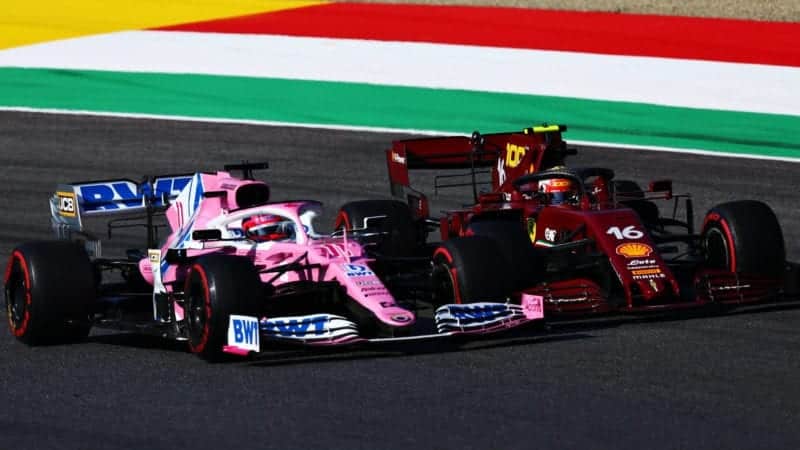But that’s for next year. For this year, there’s nothing to stop you taking direct inspiration from the parts of another car – and the updated Racing Point raced at Mugello last week featured new front brake ducts and new sidepods, both of which were uncannily similar (though not identical) to those of this year’s Mercedes W11.
Tangentially related to the Racing Point/Mercedes issue is the matter of development tokens for 2021.
As part of the post-pandemic drive to further reduce costs, only three development upgrades may be made to each car next year. This is a complex set of regulations whereby some components are assigned a single token value, others two. But an exception has been made for those customer teams currently using 2019 components (ie Racing Point and AlphaTauri, with their respective Mercedes and Red Bull rear ends) wishing to upgrade to the 2020-spec.
These will not incur the use of any tokens, which has irritated Ferrari, Renault and McLaren. Because the rear ends of the 2020 versions of both the Mercedes and Red Bull are big technological upgrades, with swept-back lower wishbones, the rear ones feeding into the crash structure behind the gearbox, rather than the gearbox itself. This clears a far cleaner airflow path in an extremely aerodynamically productive part of the car.
Ferrari was continuing with its appeal of the FIA’s Racing Point brake duct decision whilst campaigning to have the free token for Racing Point and AlphaTauri removed, and one action seemed implicitly linked to the other. But Ferrari has since dropped the brake duct protest yet the free token remains – so we await to see if there is some other ruling that may have placated Ferrari.
Any hope Ferrari may have about the imposition of a single engine mode helping it looks forlorn. From Monza, the FIA imposed a new Technical Directive that insisted only a single engine mode could be used from the beginning of qualifying to the end of the race. You can choose different modes for different tracks, but can no longer change during qualifying or race, effectively outlawing qually or overtaking modes that involved any changes to ignition timing, fuel flow, oil burn etc.
Because Ferrari was already extremely restricted in this regard (since the pre-season Technical Directives), it hoped that the ruling might bring the others down towards its level. All that appears to have happened is that any engine mileage previously used up by running the more aggressive modes has now been deployed instead – by Mercedes, Renault and Honda – to a stronger baseline mode. Charles Leclerc’s relatively strong qualifying and very poor race performance at Mugello suggests the ruling has simply switched around Ferrari’s strongest and weakest parts of the weekend.


